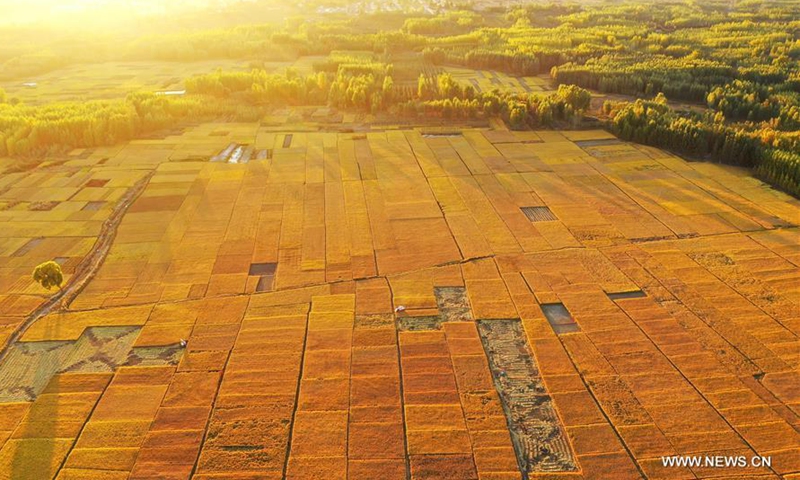World’s oldest known rice fields discovered in East China
By Chen Xi Source: Global Times Published: 2020/12/15 17:43:40

Aerial photo taken on Oct. 18, 2020 shows rice fields in Jiangzhuang Village in Luanzhou, north China's Hebei Province. (Xinhua/Mu Yu)
The site of ancient rice fields in East China's Zhejiang Province was confirmed on Monday by local archaeology authorities to be the earliest known cultivated rice fields in the world. Chinese experts say the site, which dates back to 7,000 years ago, is also the largest ever prehistoric rice field site and an important resource for researching the region's history.Wang Yonglei, team leader of the rice field project at Zhejiang Institute of Cultural Relics and Archaeology, told the Global Times on Tuesday that the total area of the prehistoric rice fields at the Shiao site in Yuyao, Zhejiang Province is about 900,000 square meters. They were used by the early and late periods of the Hemudu culture (5500BC-3300BC), a Neolithic culture that flourished in some provinces in today's South and East China, as well as the Liangzhu culture (3400BC-2250BC), the last Neolithic jade culture in China's Yangtze River Delta.
Currently, the archaeology team has found various rice fields belonging to the two cultures. The smallest one covers more than 700 square meters and the largest one covers more than 1,900 square meters.
According to reports, the natural siltation layers of the rice fields reveal the many changes that have taken place in the environment over the past 7,000 years, thus providing new material for studying the relationship between humanity and the Earth.
According to Wang, they have found some rice hulls in the fields that have provided significant insight into the Liangzhu culture. The next task for the team will be to examine the rice fields dating from the time of the Hemudu culture.
"The discovery of the prehistoric rice fields shows that rice farming was an important economic foundation for the social development of the Hemudu culture and Liangzhu culture, and provides extremely important materials for comprehensive and in-depth study of the prehistoric socioeconomic development and civilization in the downstream areas of the Yangtze River," said Wang.
Posted in: CULTURE & LEISURE,CULTURE